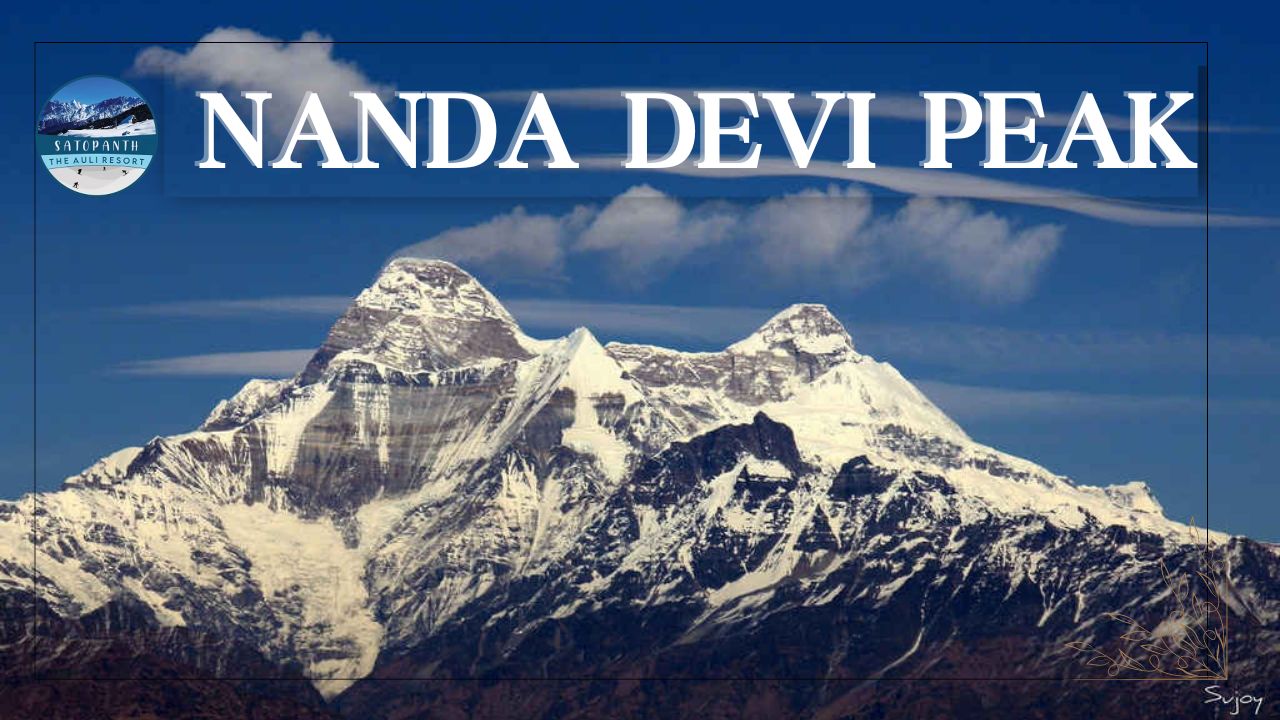

“Climb mountains, not so the world can see you, but so you can see the world.” This quote beautifully encapsulates the essence of Nanda Devi Peak, a towering masterpiece in the Indian Himalayas that offers not just breathtaking views but also a profound sense of serenity. Standing at an impressive altitude of 7,816 meters, Nanda Devi Peak is not only India’s second-highest mountain but also a destination rich in history, spirituality, and adventure. Whether you’re a trekking enthusiast or a nature lover, exploring Nanda Devi Peak will leave you mesmerized by its grandeur and untouched beauty.
Nanda Devi Peak is nestled deep within the Garhwal Himalayas of Uttarakhand, towering over the landscape like a silent sentinel. Located in the Chamoli district, it forms a part of the greater Himalayan range that stretches across northern India. What makes this peak particularly striking is not just its towering height, but its isolation. Nanda Devi stands apart from the surrounding peaks, creating a spectacle of rugged beauty and raw wilderness.
The peak’s geographical prominence is accentuated by its steep rise, making it one of the most challenging climbs in the world. But it’s not just the altitude that draws people in—it’s the nearby wonders. Nanda Devi National Park, now part of the Nanda Devi Biosphere Reserve, is a UNESCO World Heritage site known for its incredible biodiversity. The region is home to rare species of flora and fauna, making it a paradise for wildlife enthusiasts.
Visitors to the region often combine their trip with an exploration of these nearby treasures, and why wouldn’t they? The surrounding areas add layers of experience, from scenic valleys to the rich biodiversity of the biosphere.
Beyond its natural beauty, Nanda Devi Peak holds deep cultural and spiritual meaning. The mountain is named after the goddess Nanda Devi, who is revered as the protector of the region. In fact, Nanda Devi is considered one of the most sacred peaks in India, and her worship has been a part of local traditions for centuries. Every twelve years, the Nanda Devi Raj Jat Yatra, a sacred pilgrimage, takes place where devotees undertake a strenuous trek to honor the goddess.
The spiritual aura of Nanda Devi is palpable. As you trek through the region, you can’t help but feel the presence of something ancient and divine. The local people’s reverence for the mountain is evident in the stories they share and the rituals they perform.
For those who love to trek, Nanda Devi Peak offers one of the most awe-inspiring journeys you can imagine. The trek to the base of the mountain is both challenging and rewarding, filled with sweeping vistas of the snow-capped Himalayas and serene valleys that seem untouched by time.
While you can’t climb Nanda Devi itself (it’s been closed to climbers since 1982 for conservation reasons), the trek to the base camp is enough to make you feel like you’ve touched the heavens. The trek starts from Munsiyari, and as you climb, you’ll encounter cascading waterfalls, dense forests, and glacial rivers, all set against the backdrop of towering peaks.
Although trekking around Nanda Devi is no easy feat, the rewards make every step worth it. Plus, the surrounding beauty just adds to the experience—making it a perfect combination of thrill and tranquility.
Nanda Devi Biosphere Reserve. What’s amazing about this place? First off, the biosphere covers a massive area, stretching from the Rishi Ganga River all the way up to the glacial peaks. The reserve itself acts as a protective haven for numerous endangered species like the snow leopard, Himalayan black bear, and even the elusive blue sheep. In short, it’s a nature lover’s paradise.
What makes it even cooler is how the biosphere has managed to remain largely untouched by human activity. While many popular trekking routes are crowded, the Nanda Devi Reserve feels like an escape to another world—peaceful, quiet, and full of wonder. Whether you’re a wildlife enthusiast or just someone who loves the idea of exploring a place few have seen, this reserve offers a rare glimpse into pristine wilderness.
Preserving the fragile ecosystem around Nanda Devi Peak is no easy task. Due to its ecological and cultural importance, conservation efforts have been in place for decades. The area was declared a national park in 1982, and in 1988, it was recognized as a UNESCO World Heritage site. However, the protection efforts didn’t stop there.
Strict measures have been put in place to limit human interference in the region. Climbing permits have been restricted, and only a few areas are accessible to trekkers. These efforts have paid off, as the region has remained largely pristine, with minimal human impact. The flora and fauna thrive, and the natural beauty of the region continues to dazzle visitors.
Timing is everything when it comes to visiting Nanda Devi Peak. The best time to explore this stunning region is between May and October. During these months, the weather is perfect for trekking and sightseeing, with clear skies and relatively mild temperatures.
To reach Nanda Devi Peak, most people travel to the town of Joshimath, which serves as the base for expeditions to the region. From there, you can take a road trip to Munsiyari, the starting point for most treks. Joshimath is well-connected by road to major cities like Dehradun and Rishikesh. If you prefer to fly, the nearest airport is in Dehradun, from where you can hire a taxi or take a bus to Joshimath.
Nanda Devi Peak isn’t just a geographical wonder; it’s a place of immense beauty, cultural significance, and ecological importance. Whether you’re trekking through its stunning landscapes, exploring the rich biodiversity of the Nanda Devi Biosphere Reserve, or simply soaking in the spiritual atmosphere, this is a destination that leaves a lasting impression.
So, what are you waiting for? It’s time to pack your bags, lace up your boots, and experience the majestic beauty of Nanda Devi Peak for yourself. Whether you’re an adventurer or a nature lover, this iconic mountain promises an unforgettable journey into the heart of the Himalayas.
Phone: +91 8937035480, 8755918766
Email: auliresort81@gmail.com
Address: Auli Near TV Tower Sunil Joshimath 246443
Copyright © 2024 The Auli Resort. All Rights Reserved.